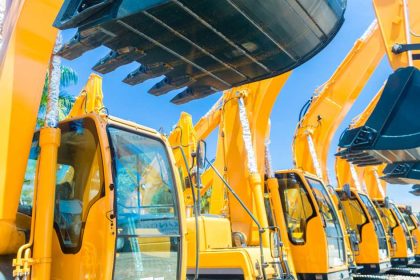As tradies, we rely on a range of tools every day to help get the job done.
And unless you’re just laying the foundations ahead of your construction career, it is safe to say most tradespeople are already aware that the cost of work tools can be claimed as a tax deduction.
However, before you start swapping the toolbelt for a calculator in a DIY attempt to do your tax return, there are still plenty of little-known rules to remain aware of.
These tax-time oversights can see even the most diligent tradies hammered by the ATO should they accidentally or knowingly claim more than their entitlements allow.
Build-it has produced this tools of the trade tax guide to give tradies a trustworthy blueprint for claiming work equipment deductions this July.
Self-employed and businesses
When it comes to claiming tax deductions for work tools, the process varies depending on whether you’re self-employed or working for someone else.
If you have been running your own business this financial year, then essential equipment such as tools can be fully deducted under the new Instant Asset Write-Off provisions.
The Instant Asset Write-Off allows construction and trades businesses with a turnover of less than $10 million to fully claim back the cost of tools purchased between July 1, 2023, to June 30, 2024 and boost their tax return.
Those yet-to-claim tools purchased and installed before the start of this financial year may qualify for an immediate deduction due to the ATO’s temporary full expensing measures.
However, you can’t just claim whatever you wish.
Tradies must be able to prove the tool’s cost and their use as part of their primary source of income.
If requested by the tax office, tradies will need to provide purchase receipts as well as information that indicates how and why the tools were needed.
It’s also essential to remain aware that if you choose to use the tools for private purposes, such as DIY home renovations or helping a friend, you can only claim a percentage of the tool’s cost as a deduction, equal to the proportional use for work-related tasks.
Self-employed tradies and business owners should be aware that fully deductible purchases under the Instant Asset Write-Off scheme are limited to assets costing less than $20,000.
Therefore, a tool costing more than this amount would likely need to be deducted using a depreciating asset table over its useable lifespan.
Employed tradies
If you work for a trade business or construction firm, you can only claim an immediate deduction for tools that cost $300 or less.
If the cost exceeds $300, you will need to write off the cost of the tools over the length of their useful life.
Meanwhile, If you purchase tools as a set or package, you cannot claim the cost of each of the set’s tool separately or split them to make up part of this $300 total deduction.
You will need to maintain evidence that the tools claimed are for work-related use only and were not previously reimbursed or paid for by your employer.
A tradie cannot claim deductions for tools already supplied or reimbursed already by another person or their work.
When it comes to more expensive work equipment that exceeds $300, employed tradies can still claim the purchase cost as a tax deduction, however, only as its depreciating value over its lifespan.
Like business owners, if the tools you purchased have been used for work and private purposes, you can only claim a deduction for the work-related portion.
Tax tool deduction summary
Business operating tradies can claim an immediate deduction for tool expenses if:
- They have a turnover of less than $10 million.
- They can prove the tool’s cost and that it was used to generate income.
- The tool has a value of less than $20,000.
Employee tradies can claim an immediate deduction for tool expenses if:
- They spent the money themselves and were not reimbursed.
- It was directly related to earning their income.
- They have a record to prove it (usually a receipt).
- The tools cost less than $300.
With just days remaining of the 2023-2024 financial year, tradies can still add to their toolbelt while being able to write off the costs on their upcoming tax return.
But it is important to remember that ATO tax rules can be complex and subject to sudden changes.
Build-it advises staying up to date with the latest tax legislation and always seeking professional advice to ensure compliance and maximise your tax return.








